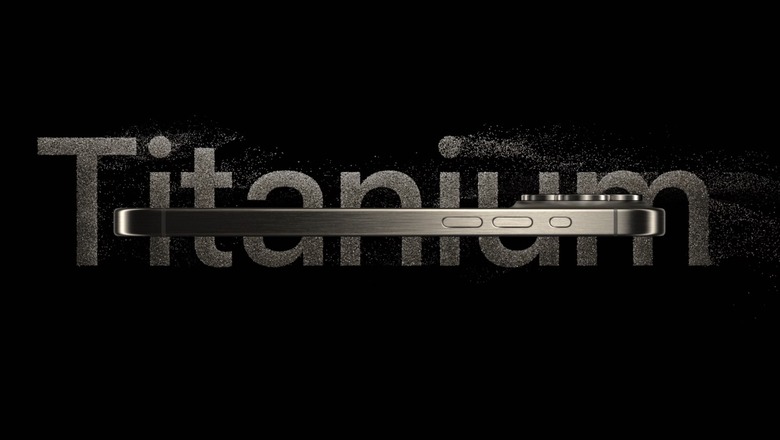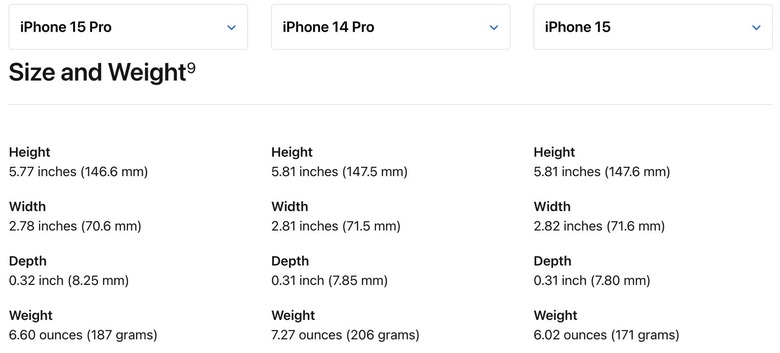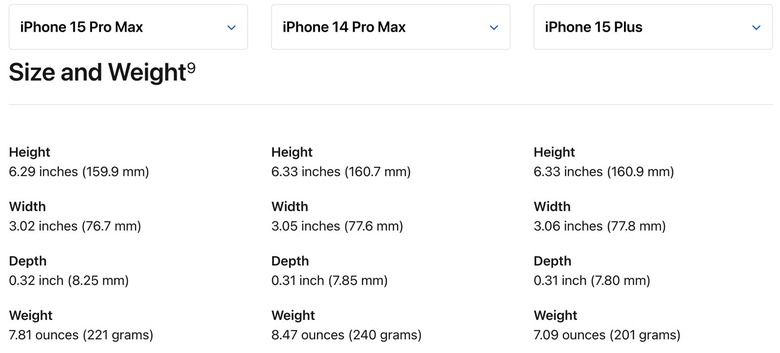Hands-On iPhone 15 Pros Experiences Say They Feel Lighter Than They Are - Here's Why
Before the iPhone 15 series came out, I said I'd pay extra for the iPhone 15 Pro just so I could get that titanium frame. If I were to upgrade to iPhone 15, that is, I'd want the lighter iPhone experience. The weight of the iPhone 14 Pro I own is easily the worst thing about the handset.
While I plan to skip the iPhone 15 upgrade, the introduction of titanium has me excited for future iPhones. Especially since Apple hasn't really increased the iPhone 15 Pro prices. Maybe all models will get titanium chassis down the road, and an iPhone 16 made of titanium and glass would be an amazing design.
It turns out that the weight reduction isn't that big of a deal on paper. It's under 20 grams compared to their predecessors. But hands-on experiences with the iPhone 15 Pro and 15 Pro Max say the handsets feel lighter than they are.
How Apple makes titanium iPhones
As you'll see below, the iPhone 15 Pro and 15 Pro Max are 19 grams lighter than the previous models. Apple achieved that by using titanium for the band that surrounds the phone instead of stainless steel. The internal frame is made of aluminum, which is directly bonded to titanium.
During the press event, Apple focused on that design aspect, explaining the high-tech manufacturing process of bonding aluminum and titanium. Here's how Apple described the process, as seen in the clip at the end of this post:
Using an industry-first thermo-mechanical process, the titanium bands encase a new substructure made from 100 percent recycled aluminum, bonding these two metals with incredible strength through solid-state diffusion.
As Dr. Drang explains, Apple practically explains a welding process that involves heating the two materials and then "smushing them together." But it's a high-tech type of welding involving thin components that Dr. Drang says might be "well beyond what other companies can achieve."
The iPhone 15 Pros are lighter than you might think
The point here is that the titanium-aluminum chassis is what allowed Apple to shave off nearly 20 grams of weight from each iPhone 15 Pro model. As you can see from the measurements, the two new Pro iPhones are also slightly more compact than before, though they're somewhat thicker.
During the iPhone 15 rumors season, I speculated that the extra width would let Apple place a larger battery inside the iPhone 15 Pro models. Without increasing the weight. That appears to be the case, though iPhone 15 Pro battery life estimates are identical to last year.
Dr. Drang's post actually explains the reason why the iPhone 15 Pro and 15 Pro Max might feel a lot lighter than that. He linked to Jason Snell's iPhone 15 Pro's hands-on experience with the new iPhones from the Apple event. Snell said the handsets feel lighter than expected:
As someone who uses an iPhone 14 Pro every day, I instantly noticed how different the iPhone 15 Pro feels in my hand. It's a combination of factors. First, the phone is noticeably lighter. This is not a minor, quirky, 'I suppose if you weighed it, you'd grudgingly admit it's a few grams lighter' sort of thing. It's very clearly noticeable, thanks to the combined titanium and aluminum design. It doesn't feel flimsy, mind you–it's very solid but quite lighter.
Dr. Drang says that one possible explanation has to do with the way humans are built. We might be more sensitive than we think, and that 9-10% mass drop is noticeable to the senses.
What is the moment of inertia of a device?
Another explanation is the moment of inertia of the iPhone 15 Pro and 15 Pro Max. The moment of inertia impacts how the iPhone feels when you hold it in different positions while you use it. The lower it is, the easier it might feel to twist and turn the iPhone around. Especially when using it one-handed.
Mass reduction for the iPhone 15 Pros occurs mainly at the phones' perimeters, where titanium replaces stainless steel. As a result, the moment of inertia might be reduced more than if the mass were reduced uniformly.
Dr. Drang calculated the reduction in the moment of inertia and found a 14-15% drop compared to the iPhone 14 Pro and 14 Pro Max. That's why the titanium iPhone 15 Pro models might feel so much lighter:
But even if the numbers are further off than I think, the concept is correct. Reducing the mass at the perimeter, which the change from stainless steel to titanium has done, has definitely reduced the moment of inertia more than a uniform reduction in mass would have. And that will make the 15 Pro easier to manipulate and will contribute—at least somewhat—to the impression of lightness.
That's certainly great news for the evolution of the iPhone, not just the new Pro models. Again, I'm looking forward to seeing Apple use the same titanium-aluminum chassis in future iPhone models, including the base versions. And, if Apple can find ways to reduce the cost of manufacturing goods out of titanium, we might see titanium used for iPads and Macs down the road.


